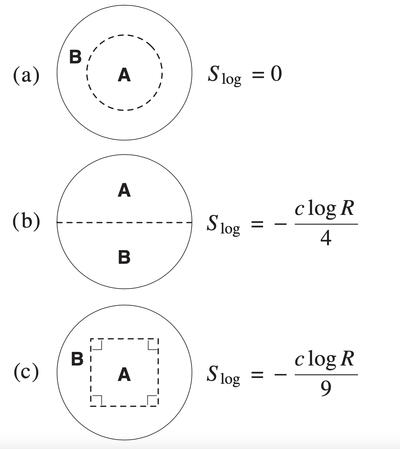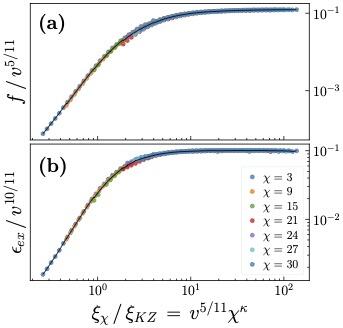HOME | WHAT WE DO | WHO WE ARE | WHAT'S GOING ON | HOW TO JOIN
Ideas from physics have been important in the theory of information since its beginnings: for example, Shannon's development of the modern theory of information gave a deeper understanding of the concept of entropy introduced by Boltzmann. Many beautiful new ideas about information appear in the context of many-particle quantum systems, such as entanglement entropy and the eigenstate thermalization hypothesis. One reason for studying quantum information is to gain new insight about many-body states arising in nature, as in the study of the geometric dependence of entanglement at quantum critical points (Figure 1, from Fradkin and Moore, PRL 2006), and about how those states might be useful in building a quantum computer.

Figure 1 (left): entanglement entropies generated by different spatial cuts for a planar conformal quantum critical point (QCP).
Figure 2 (right): Two-parameter scaling collapse for the excitation and energy densities created after sweeping through a QCP.
It turns out that quantum information questions appear naturally also in classical computational methods for quantum states. The density matrix renormalization group algorithm, invented by Steve White (UC Irvine) in 1992, effectively constructs a class of states that preserve local entanglement while forgetting the details of long-ranged entanglement. In the course of using this algorithm to understand strongly correlated matter, we were motivated to understand how the properties of a quantum state control its accessibility by these matrix product states. An example of recent work in this area was the understanding, using ideas from scaling theory and the renormalization group, of how both finite maximal entanglement or "bond dimension" and finite sweep rate of the Hamiltonian across a quantum critical point act as parameters for a universal scaling description (Figure 2, from Sherman, Avdoshkin, and Moore, PRL 2023 to appear).
